Castellón de la Plana, more commonly known as "Castellón," is the Capital of the province of Castellón, in the Valencia region. The town of some 175,000 inhabitants is situated approximately 65 kilometres north of Valencia city.
For holidaymakers, visiting Castellón offers a fun day out. The town centre is not too big and can be easily seen in a day, with a charming historical center, several parks and squares, numerous bars, restaurants and cafes.
A prime destination for culture lovers, with plenty of museums that are free every day, including the Museo de Bellas Artes and the Museo Etnológico.
Castellón consists of two parts: the old town with its 'newer' neighbourhoods. Neighbourhoods, that had to be rebuilt after the Spanish Civil War (the town suffered extensive damage during the fighting). And El Grao, the port area that is characterized by its many fish restaurants and beaches.
A walking route around Castellón
Here's a suggested walking route around Castellón's main sights. We've included 11 points of interest and have added plenty of restaurant and tapas bar suggestions at the bottom of the article. This walk can easily be completed within a day.
1. Plaza Mayor - Main Square
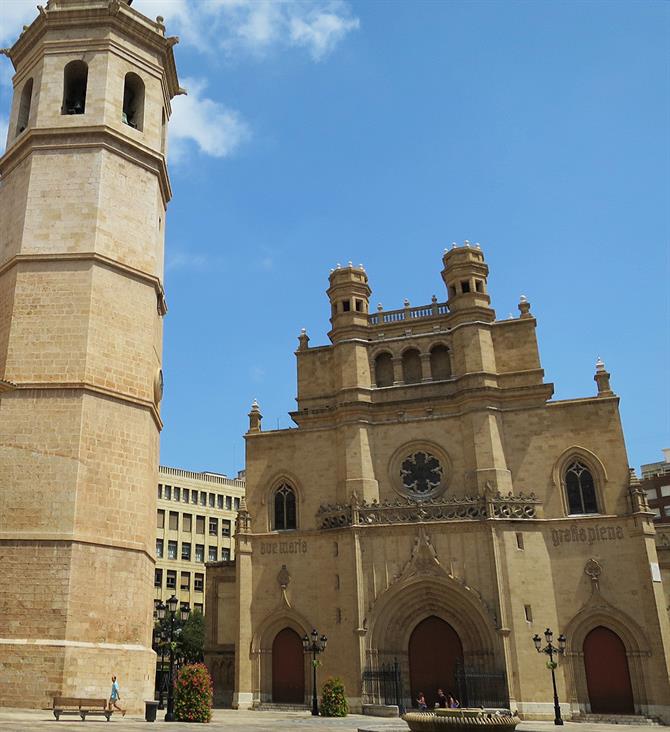
Plaza Mayor is the place to start any visit to Castellón.
The original Santa Maria Cathedral dates from the 12th century and had extensive reformations in the 14th Century following a fire.
The cathedral and its adjacent bell tower had to be completely rebuilt after suffering extensive damage during the Spanish Civil War in 1939.
The bell tower is separated from the main body of the church. This octagonal-shaped edifice was built in the sixteenth century and is known locally as 'El Fadri'.
2. El Fadrí Campanario – Fadri Belltower
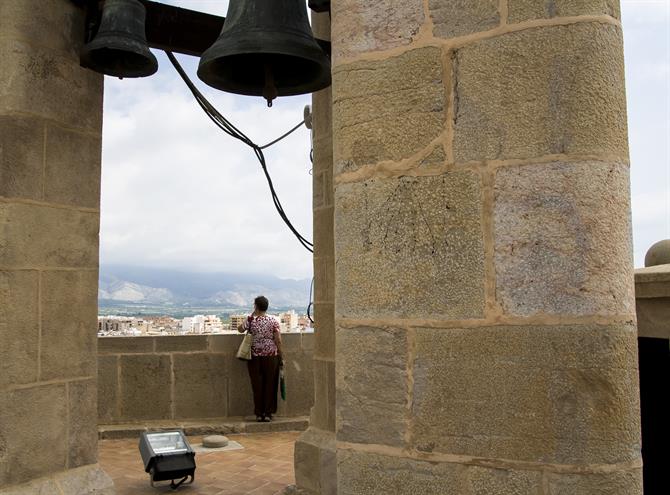
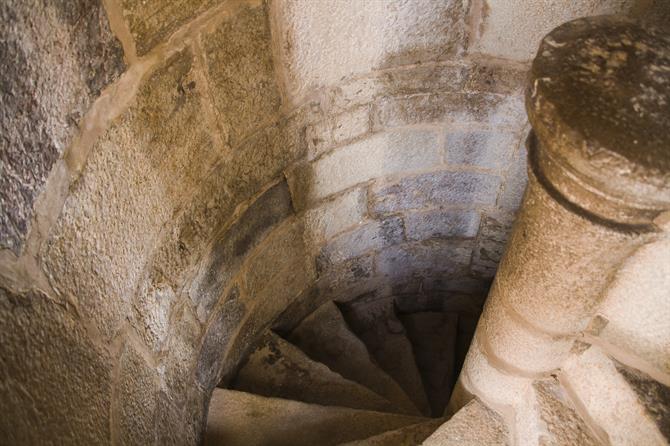
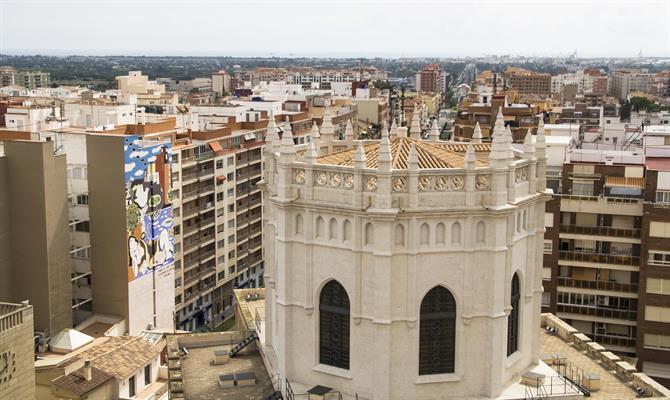
3. Ayuntamiento de Castellón – Castellon Town Hall
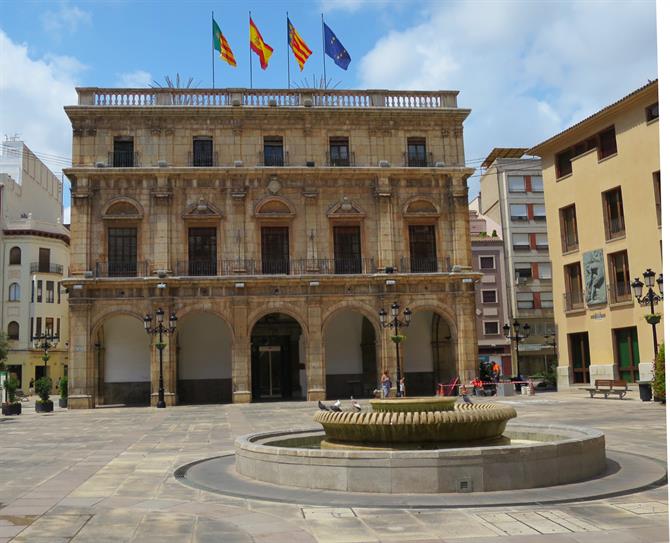
4. El Mercado Central - the Central Market
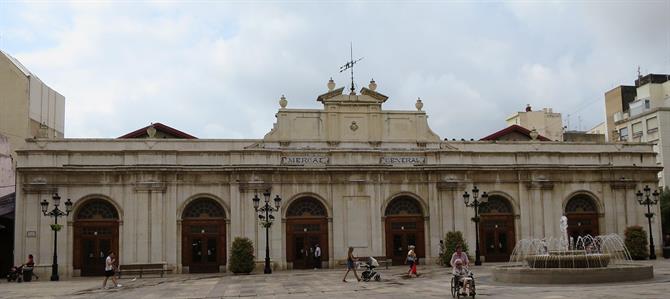
Next stop is the Mercado Central, as it closes at 14h.
A visit to a town's main market should always be high on any traveller's wishlist. The Mercado Central in Castellón is no different. It's the place to see local produce and customs up close. The building dates from the early 20th century.
Following a wander around the market, it's now time to start thinking about a well deserved lunch or at least a tapa. Just behind the market you'll find the Plaza Santa Clara. A square that is lined with cafes and bars. A good place to stop for a snack (for more detailed suggestions, see the bottom of the article.)
5. Muralla Liberal
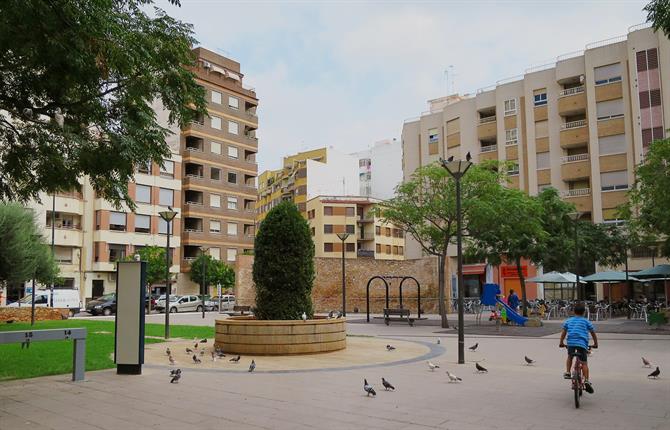
Calle Mayor is one of the main thoroughfares leading off Plaza Santa Clara. Follow this road all the way to Plaza Maria Augustina, taking note of the huge ficus tree, one of the city's oldest and most majestic trees.
Next stop is Plaza Muralla Liberal. As the name suggests, this is the only place in Castellón where you can see remains of the old city wall.
6. La Llotja del Cànem
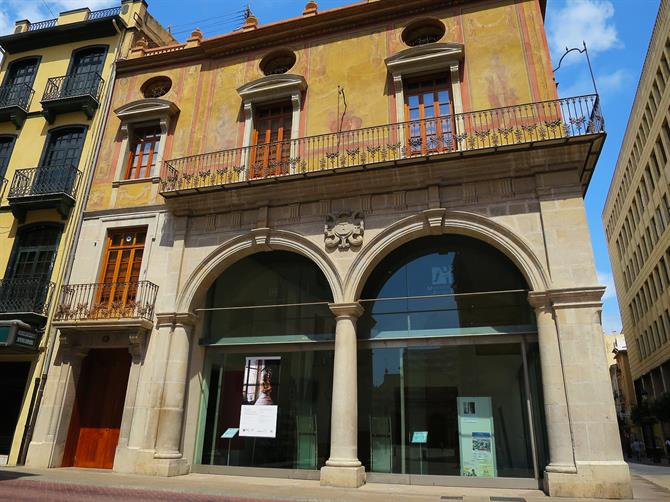
Returning along the Calle Mayor and taking a right just before reaching the Cathedral, you'll fall upon Calle Colón. Here, you'll find a large 17th Century Baroque-style building, the Llotja del Canem. It was originally used to store hemp cloth, a very important commodity in those days.
Llotja del Carmen was declared an historic-artistic monument in 1984 and is now part of the Universidad Jaume I, playing host to exhibitions and cultural activities.
7. Edificio de Correos y Telégrafos - Post Office
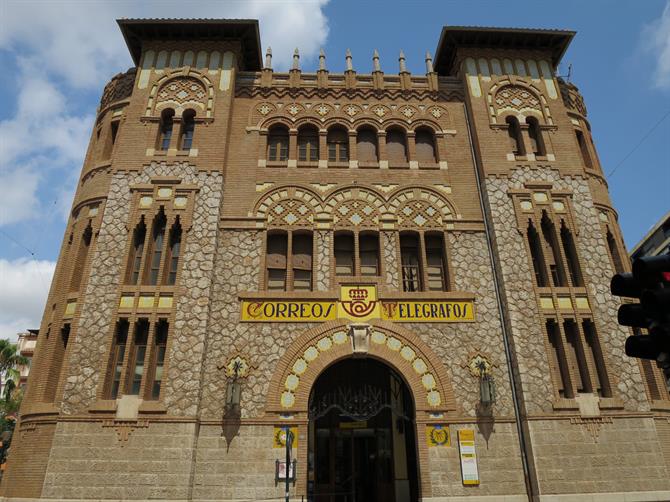
The three storey Post Office was built in 1932, and is a good example of a modernist building in the city.
Carrying on a little further we find the equally modernistic Farola (1929), or streetlight, on the Plaza Independencia. All around this symbolic city lantern, are other beautiful historic and modernist-style buildings.
8. Casino Antiguo - The Old Casino
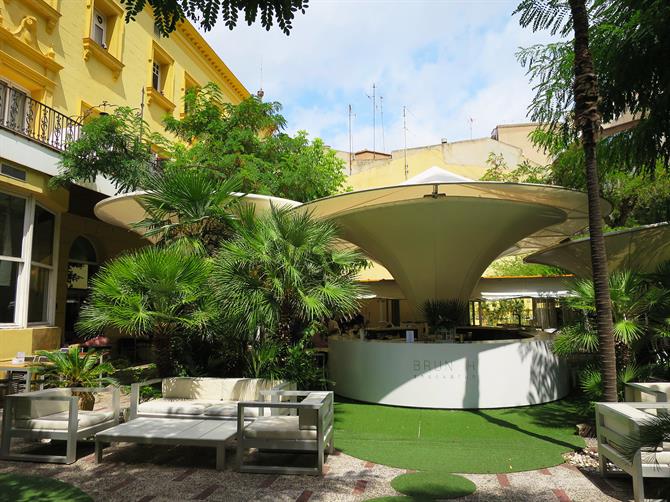
Follow Av. Rey Don Jaime south and take the first left onto Calle Ruiz Zorrilla, you'll arrive at the Casino Antiguo (the old casino) on Puerta del Sol. A palatial yellow building, that was completely renovated in 1922 and still retains that 20s character.
It is now an elegant restaurant with a beautiful garden. You can enter through the gate beside it (the casino itself is only accessible to members upon request, or in organised groups) and can enjoy some delicious tostadas with various fillings, the Solomillo con Queso Fundido (meat fillet with melted cheese) is highly recommended.
9. Teatro Principal - Main Theatre
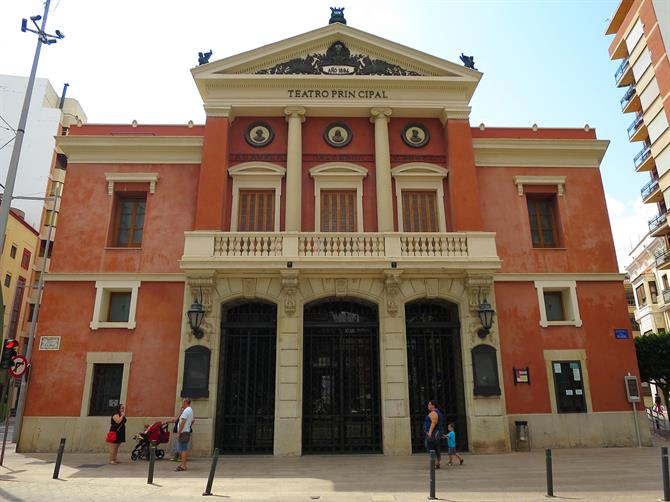
The main theatre is also worth seeing. Completed in 1894 in a neoclassical style, the theatre sits adjacent to a lively and picturesque square, Plaza de la Paz. A great place for a coffee and/or drink in one of the many cafés.
10. Plaza Huerto Sogueros
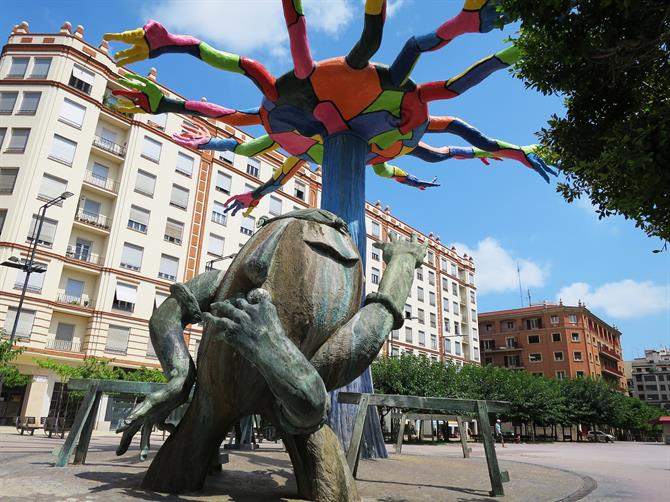
Aside from all the street art that's spread out across Castellón, there are several sculptures by the imaginative regional artist Ripollés, including the one in the picture above - situated in Huerto Sogueros square.
11. Parque Ribalta - Ribalta Park
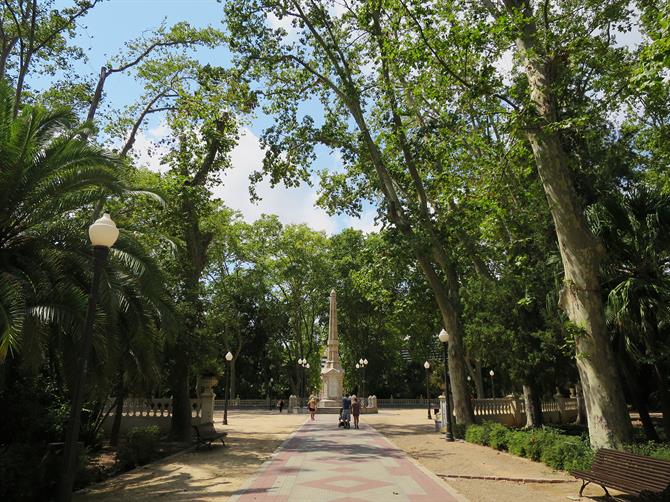
In 1868, the town hall decided to build a promenade to commemorate the painter Ribalta. This promenade eventually grew into the Parque Ribalta. A beautiful Mediterranean park that offers plenty of vegetation and shade on a hot summer's day. Just behind it sits the iconic Spanish department store El Corte Inglés.
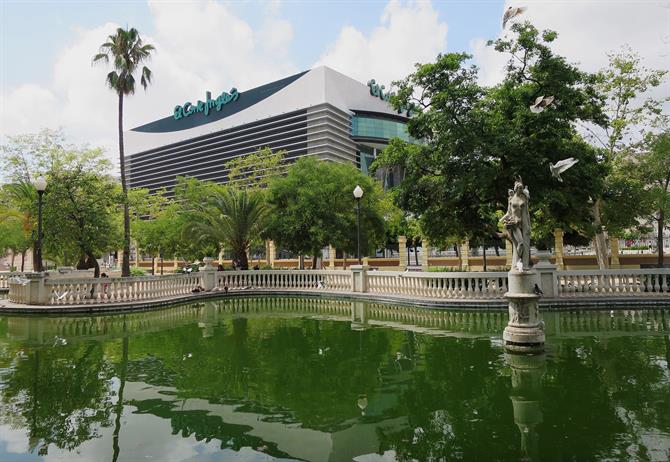
Places to eat and drink
Restaurants:
- Corpore Sano: is located near the Parque Ribalta (calle d 'Amadeu 1). Corpore Sano offers a fantastic Menu de Dia (daily menu), for 12 euros on weekdays and a little more on weekends. Great value for money.
- L'Etrusco (Calle de Santa Bárbara 50) has an excellent reputation for those who fancy pizza or pasta.
Tapas:
The best area for tapas is around the Mercado Central, the central market. Going out for drinks and tapas is a popular activity (particularly on a Thursday night) and is known locally as 'Ir de tascas.'
- Bar Ernesto, on Calle Baracas 4, the patatas bravas and montaditos are recommended.
- El Mejillón on Calle Isaac Peral 9, tapas like patatas bravas, pulpo a la Gallega (octopus) are specialties. Another highlight of this bar is a homemade white wine spritzer, called "Zurra."
Going out:
- Pub Terra Nova (calle Ramón Llull 19) is popular and offers live music.
A special thanks to our guides, Annelise Veiga and Rodrigo Cambronero for this tour of their city!
